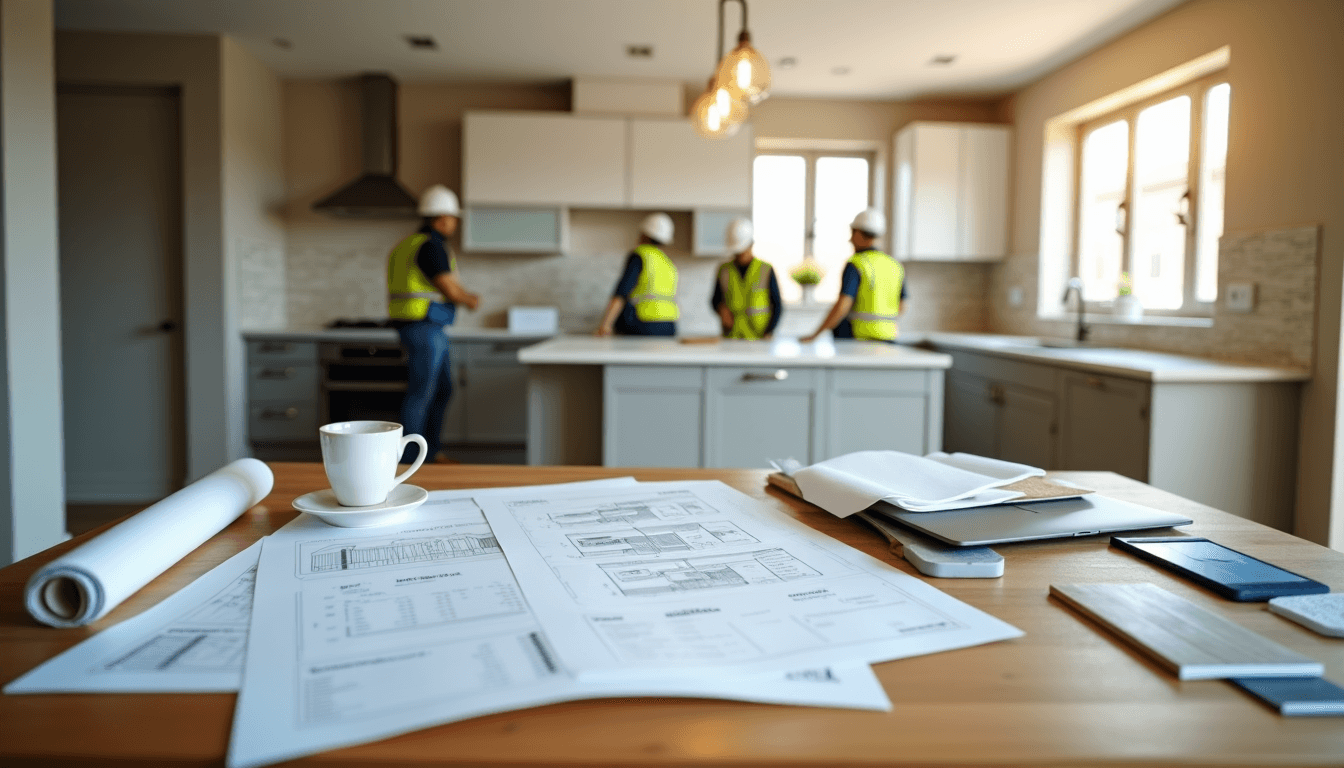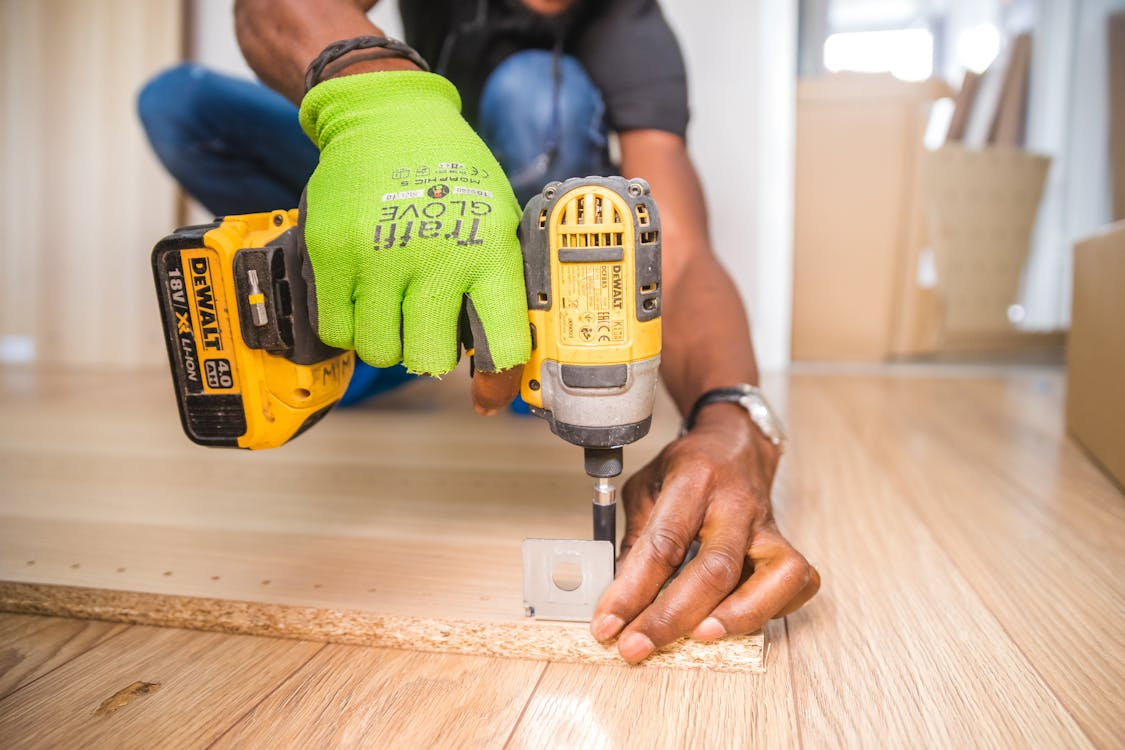Did you know that home renovations are one of the five most stressful experiences families go through?
Your dreams of a kitchen makeover or complete house transformation need careful planning, time, money, and effort. A renovation project might take anywhere from a week to eight months. You’ll face challenges like permit delays, bad weather, and shipping problems along the way.
Good planning can turn this overwhelming process into a manageable trip. Success comes from solid preparation – you should set aside 10-20% of your budget for surprise costs and learn about local building permits.
We’ve created this piece to help you direct your renovation project with confidence. Let’s look at the basic steps to remodel your house and keep your sanity intact.
Prepare Your Home and Family
Your home remodel planning works best when you prepare your family and living space first. A good strategy helps you deal with the chaos and stress that comes with renovation.
Creating a Family Decision-Making Framework
Your family needs clear communication channels from day one. Make renovation decisions as a team and let your kids help with small choices – it makes them feel part of the process. Your regular family routines like mealtimes and bedtimes should stay consistent to keep everyone stable during the renovation.
Setting Up Temporary Living Arrangements
Look at your living options based on how big the renovation is. Projects that take more than 30 days need careful planning for temporary housing:
- Short-term rental properties with flexible lease terms
- Extended-stay hotels with kitchen facilities
- Mobile homes or RVs on your property
- Family or friends’ homes that are affordable
Your temporary home should fit your pets and give you the basics like workspace and a kitchen. The renovation timeline might change unexpectedly, so plan for a longer stay just in case.
Protecting Valuables and Existing Structures
Make a detailed list of your belongings and take pictures to document their condition. Keep valuable items in secure storage away from where work happens. The items that stay home need heavy-duty plastic sheeting and drop cloths to stay dust-free. You should seal off work areas with plastic barriers and use air purifiers with HEPA filters to keep the air clean.
Master the Steps to Remodel a House
A full house renovation needs proper planning and knowledge of steps and regulations that guide the process.
Breaking Down the Renovation Process
A complete home renovation of a 2,500-square-foot house usually takes 8 to 10 weeks. Note that this timeline changes based on project scope, material availability, and weather conditions. The renovation process follows a well-laid-out sequence:
- Site preparation and demolition (Week 1)
- Rough work including framing and utilities (Weeks 2-3)
- Drywall installation and finishes (Week 4)
- Interior trim and cabinetry (Week 5)
- Painting and detail work (Weeks 6-8)
Understanding Building Codes and Permits
Your local authorities require building permits when construction changes your home’s structure or room usage. Hiring professionals, such as Local Law 11 contractors, can ensure your project complies with all regulations and avoids costly delays.
You need permit applications before starting:
- Structural modifications
- Room additions
- Major system updates
- Window or wall layout changes
The permit review process needs detailed plan submission and multiple inspections during construction. Some jurisdictions need professional plans from licensed architects or engineers.
Planning for Each Construction Phase
Construction phases need a logical sequence that ensures proper installation and inspection.
The process flows from structural work to finishing touches:
- Start with foundation repairs and structural modifications
- Install electrical, plumbing, and HVAC systems while walls are open
- Complete insulation and drywall installation
- Add fixtures and finishes
- Schedule final inspections
A whole house renovation costs between $15 and $60 per square foot, depending on location and material choices. You should set aside 10-20% of your budget to handle unexpected problems.
Design Your Dream Space
Your ideal living space comes alive when you mix technology with personal touches. Smart home features and artistic elements can turn a simple renovation into your own special sanctuary.
Incorporating Smart Home Technology
Smart home features are now a priority for 28% of homeowners who renovate. We planned the integration of smart technology during the design phase to ensure a smooth installation.
A well-laid-out smart home system gives you these benefits:
- Better security with cameras and smart locks
- Lower energy bills through automated thermostats
- Easy control with voice-activated systems
- Individual-specific comfort settings for lights and temperature
Smart home technology needs proper infrastructure planning in your remodel. You need the right wiring for devices and strong Wi-Fi coverage throughout your home. Smart thermostats work with temperature sensors to control each room’s climate. Integrated security systems let you check doors and windows from anywhere.
Incorporating Artwork to Personalize Walls
Wall art changes the mood of any room dramatically. Custom artwork adds style and character while starting great conversations. Whether you’re decorating a living room or selecting paintings for bedroom walls, art can bring a sense of calm, warmth, or energy to your space.
You could ask an artist to create pieces that capture your precious memories or life’s big moments. A gallery wall that mixes professional artwork with family photos tells your story and celebrates memorable moments in your life.
The right artwork needs careful wall measurements and space assessment. Your chosen pieces should match your furniture setup and lighting design. Good lighting can emphasize the colors, textures, and details in your artwork.
Manage the Construction Process
Your home remodel’s success depends on good coordination and quality oversight. The core team’s project manager handles everything in the process and makes sure work finishes on time while meeting quality standards.
Coordinating Deliveries and Installations
The quickest way to manage materials is to stagger orders based on when you need them. Your project manager plans deliveries to reduce storage time and protect materials from damage instead of ordering everything at once.
This needs careful planning of:
- Material arrival times
- Storage arrangements
- Installation sequences
- Crew availability
Good delivery and installation management helps avoid extra costs and keeps the project on track. Your project manager keeps clear communication with vendors and trade partners to ensure they deliver quality work on time.
Quality Control and Inspections
Quality control helps achieve the best results in your renovation project. Many homeowners hire third-party quality control consultants who bring fresh viewpoints to the construction process.
A detailed quality control process has regular site inspections at important stages.
The inspector looks at:
- Foundation work
- Structural modifications
- Electrical installations
- Plumbing systems
- Final finishes
Schedule inspections at least 24 hours before covering any work. The inspector signs the Building Card after approval. If changes are needed, they provide a detailed notice with the work to be done.
Quality control consultants help bridge gaps between homeowners and builders and make sure issues get fixed quickly. This extra supervision reduces rework and keeps your project moving smoothly.
Conclusion
Home remodeling enhances living spaces but tests your patience and planning abilities. Success starts with proper preparation – you need to protect valuables, set up temporary living areas, understand construction phases and get required permits.
A smart plan helps you handle the typical 8-10 week renovation timeline for a 2,500-square-foot house. Quality professionals, clear communication, and strict quality checks will help you achieve your desired results.
Your budget should include a 10-20% buffer for unexpected problems. Keep your schedule flexible. A successful renovation project balances your family’s needs, design priorities, and construction demands to create an individual-specific space that matches your lifestyle.
Your dream home takes shape through detailed planning and proper coordination. Focus on your renovation goals, trust the process, and your vision will become reality.














